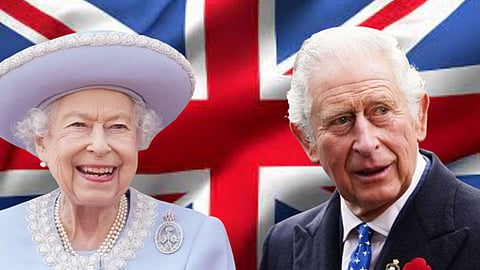

Let’s start with a cliché. The Queen is dead, long live the King. For some reason, this line works every time it is used, though these days, mostly in period films. There is a certain ring to it that marks the passing away of a monarch and succession by a new one. In this case, Queen Elizabeth II and King Charles - who waited, waited and waited in the wings for the magical moment when he would be crowned King to arrive.
India too had its share of kings and queens. At the time of independence, there were 565 princely states in the country. Almost all of them chose to join the Indian Union after independence. In return, the Indian government paid the princely families a certain sum every year. A complex system was put into place to calculate this sum, which was approximately one-fourth of the revenue earned by them earlier. In 1971, privy purses were abolished and the erstwhile princes had to work just like us.
However, the equation between rulers and ruled did not change. We swapped kings and queens for chief ministers and prime ministers. The only difference now is that anyone can be king for five years. And at the top is the emperor or prime minister who wields tremendous power over the fortunes of 1.3 billion people.
If Kings and queens have to win wars to remain in power, rulers today have to win elections, which are akin to wars without swords and shields.
As democracy progressed or regressed, the kings and queens that we elected became lakhpathis, and then crorepathis. Today it is quite impossible for a person without financial muscle to get elected as the battlefield has been skewed in favour of the rich and powerful.
If the switch from monarchy to democracy was quick and painless, barring a few instances, in the United Kingdom the journey from powerful kings to parliament took a few hundred years. Today, the British monarchy is a symbol, but a powerful one. And it generates news, views and a lot of bitching.
Queen Elizabeth II was perhaps the last influential monarch, who was respected across the globe. She was crowned Queen at a tender age of 26. To understand what that means, ask yourself what you were doing at that age and compare. Despite being ill-repared for the task, she gradually slipped into the role and grew with it.
She protected the monarchy with an iron hand. The challenge of being Queen or King is that one has to be popular without coming across as ordinary - which isn't easy. Diana was immensely popular and we all know how her story came to a tragic end.
When you live as long as the Queen lived and rule as long as she did, one can easily say, she had seen it all — triumph, travails and a fair share of tragedy too. From 1952 to 2022, she saw the comings and goings of 15 prime ministers, from Winston Churchill to Margaret Thatcher to Boris Johnson to Liz Truss, which is quite a lot for one lifetime.
Queen Elizabeth has left the monarchy on a very firm foundation and UK is the better for it. She has left an indelible imprint on the sands of time and King Charles might expend a great deal of his reign, if not all of it, attempting to step out of her shadow.
Fortunately or unfortunately, for better or worse, England is stuck with Charles and Charles with England.
Long live the King!